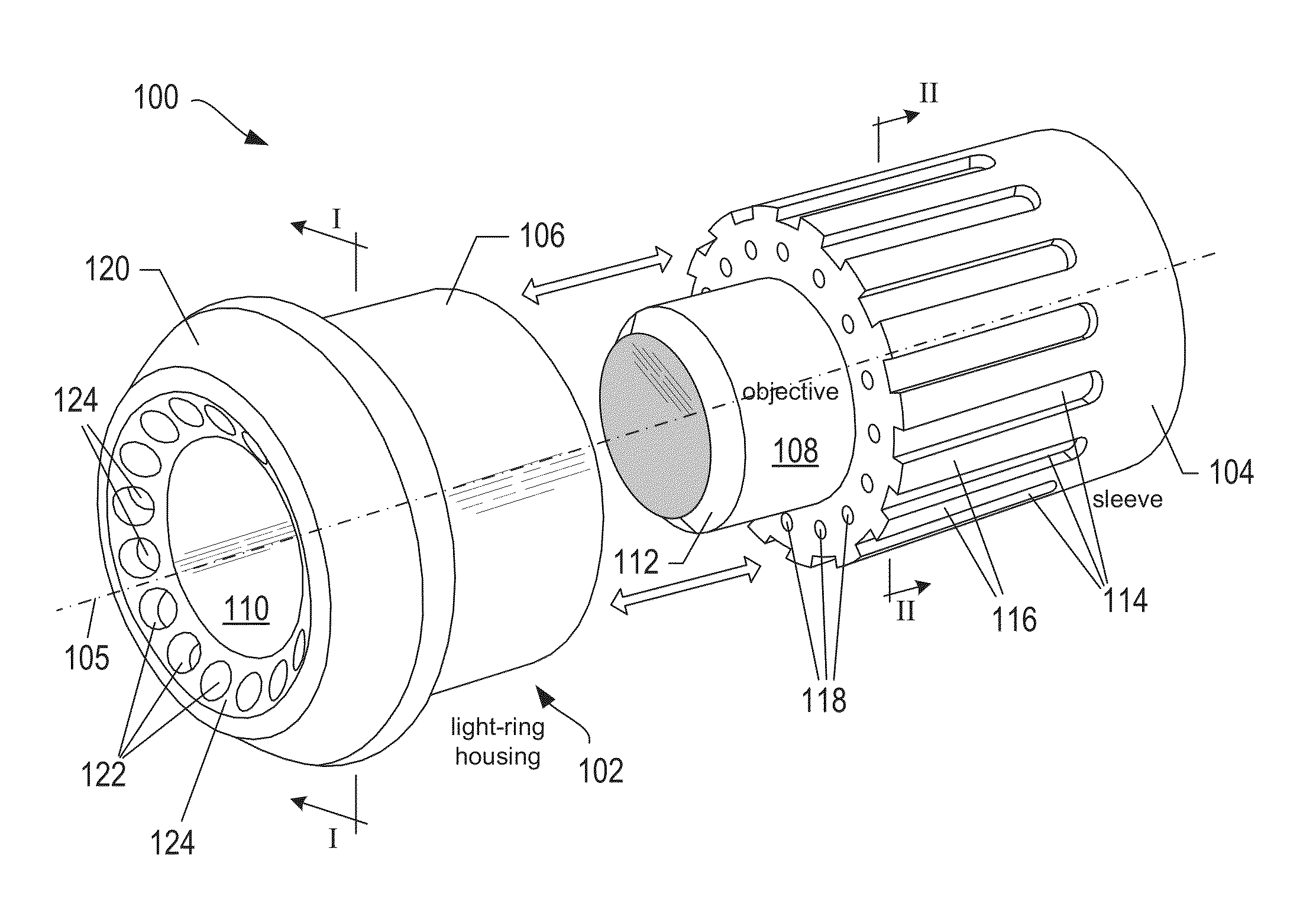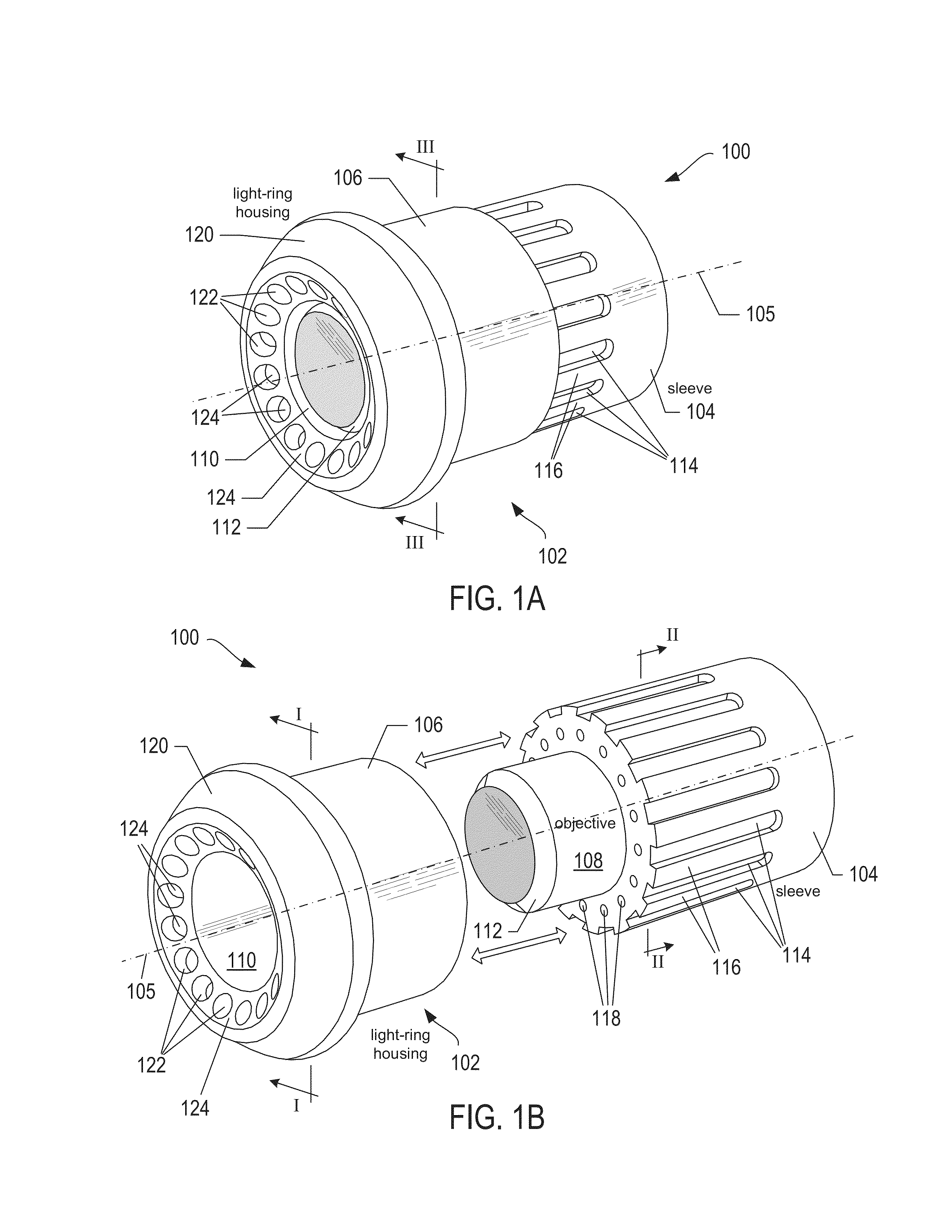Oblique-illumination systems and methods
- Summary
- Abstract
- Description
- Claims
- Application Information
AI Technical Summary
Benefits of technology
Problems solved by technology
Method used
Image
Examples
Embodiment Construction
[0024]FIGS. 1A-1B show perspective views of an example oblique-illumination system 100. The system 100 includes a light-ring housing 102 and an objective sleeve 104. The light-ring housing 102 and sleeve 104 are cylindrical and are shown in FIGS. 1A-1B as sharing a common cylindrical axis 105. FIG. 1A shows a perspective view of the sleeve 104 inserted into a cylindrical shell 106 of the housing 102. FIG. 1B shows the sleeve 104 removed from the cylindrical shell 106 and a microscope objective 108 inserted into a cylindrical opening of the sleeve 104 and reveals a cylindrical opening 110 in the housing 102, which is dimensioned to receive the objective 108 so that when then sleeve 104 is inserted into the cylindrical shell 106 of the housing 102, as shown in FIG. 1A, front lens assembly 112 of the objective 108 is exposed. The optical axis of the objective 108 corresponds to the common cylindrical axis 105 of the housing 102 and sleeve 104. FIGS. 1A-1B show a number of radially-spac...
PUM
 Login to View More
Login to View More Abstract
Description
Claims
Application Information
 Login to View More
Login to View More - R&D
- Intellectual Property
- Life Sciences
- Materials
- Tech Scout
- Unparalleled Data Quality
- Higher Quality Content
- 60% Fewer Hallucinations
Browse by: Latest US Patents, China's latest patents, Technical Efficacy Thesaurus, Application Domain, Technology Topic, Popular Technical Reports.
© 2025 PatSnap. All rights reserved.Legal|Privacy policy|Modern Slavery Act Transparency Statement|Sitemap|About US| Contact US: help@patsnap.com



